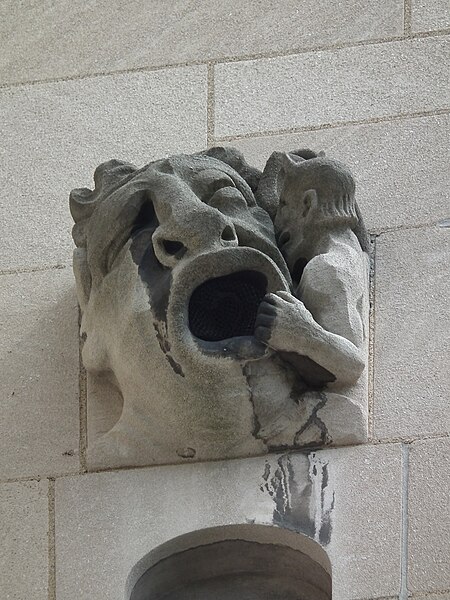
Built in 1890, this rich feast of stonework was designed by Frederick Osterling in his Richardsonian Romanesque phase.

The carved ornaments are by Achille Giammartini, including old Pa Pitt’s favorite gargoyle in the city.



Comments

Built in 1890, this rich feast of stonework was designed by Frederick Osterling in his Richardsonian Romanesque phase.

The carved ornaments are by Achille Giammartini, including old Pa Pitt’s favorite gargoyle in the city.




Built in 1905–1909, St. Andrew’s was designed by Carpenter & Crocker, who seem to have been favorites among the Episcopalians of Pittsburgh: they also designed the parish house for the cathedral downtown and St. James’ in Homewood, now the Church of the Holy Cross. This building is dominated by its outsized tower.





Very grouchy gargoyles guard the tower.


An ornamental pinnacle on one corner of the tower.

The side entrance, with one of its lanterns.



A very stony Anglican church that has kept its rich black coat of soot.


Gargoyles guard the building from the top of the tower.




This elaborately stony Gothic church is small but rich; it seems to represent an American Christian’s fantasy of the Middle Ages. It is no longer active as a church, but the building is kept in good shape by the current occupants, “The Center of Bellevue.” The gargoyles on the tower are distinctive and impressive.
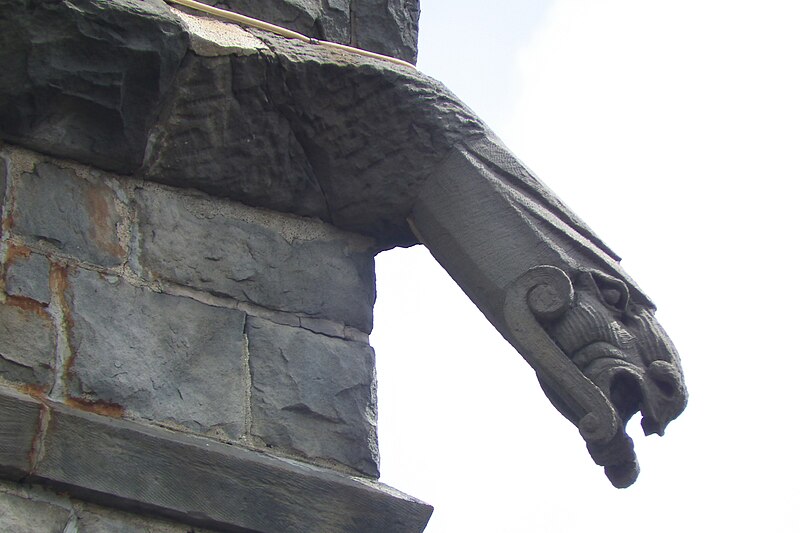



This was the Methodist Protestant church, as the inscription informs us. Bellevue’s Methodist Episcopal congregation built just across the border in West Bellevue, now Avalon, where the congregation still meets in what has become known as the Greenstone Church.
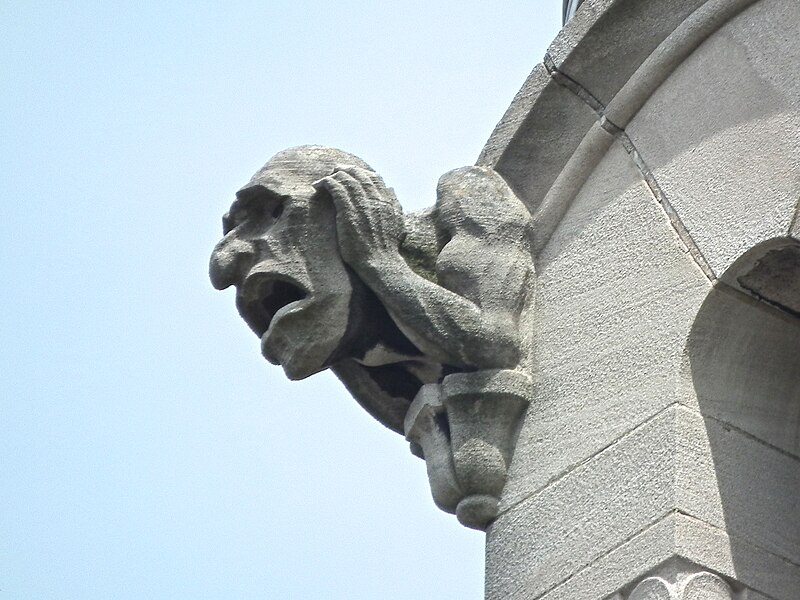
The gargoyles on the Church of the Assumption capture the true medieval spirit of inspired grotesquerie and goofiness and filter it through a twentieth-century sensibility. This gargoyle is having a bad day.
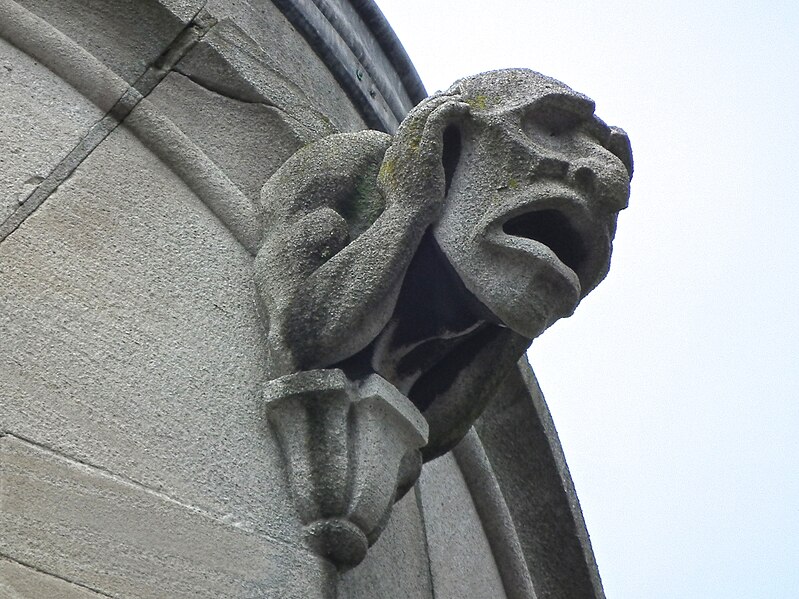
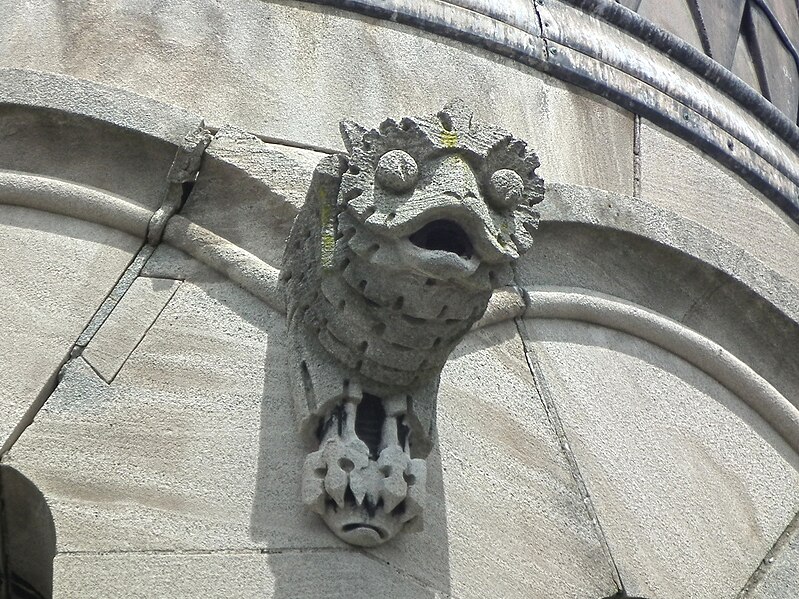



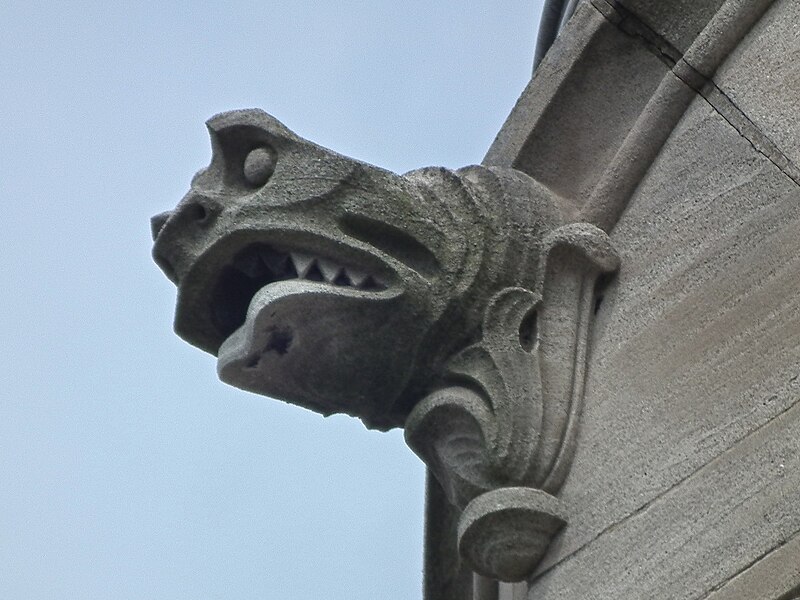

This one on the side of the building seems to be above a chimney vent. It demonstrates, in a silly way that would have appealed to the medieval sense of humor, one of the torments prepared for the damned.
